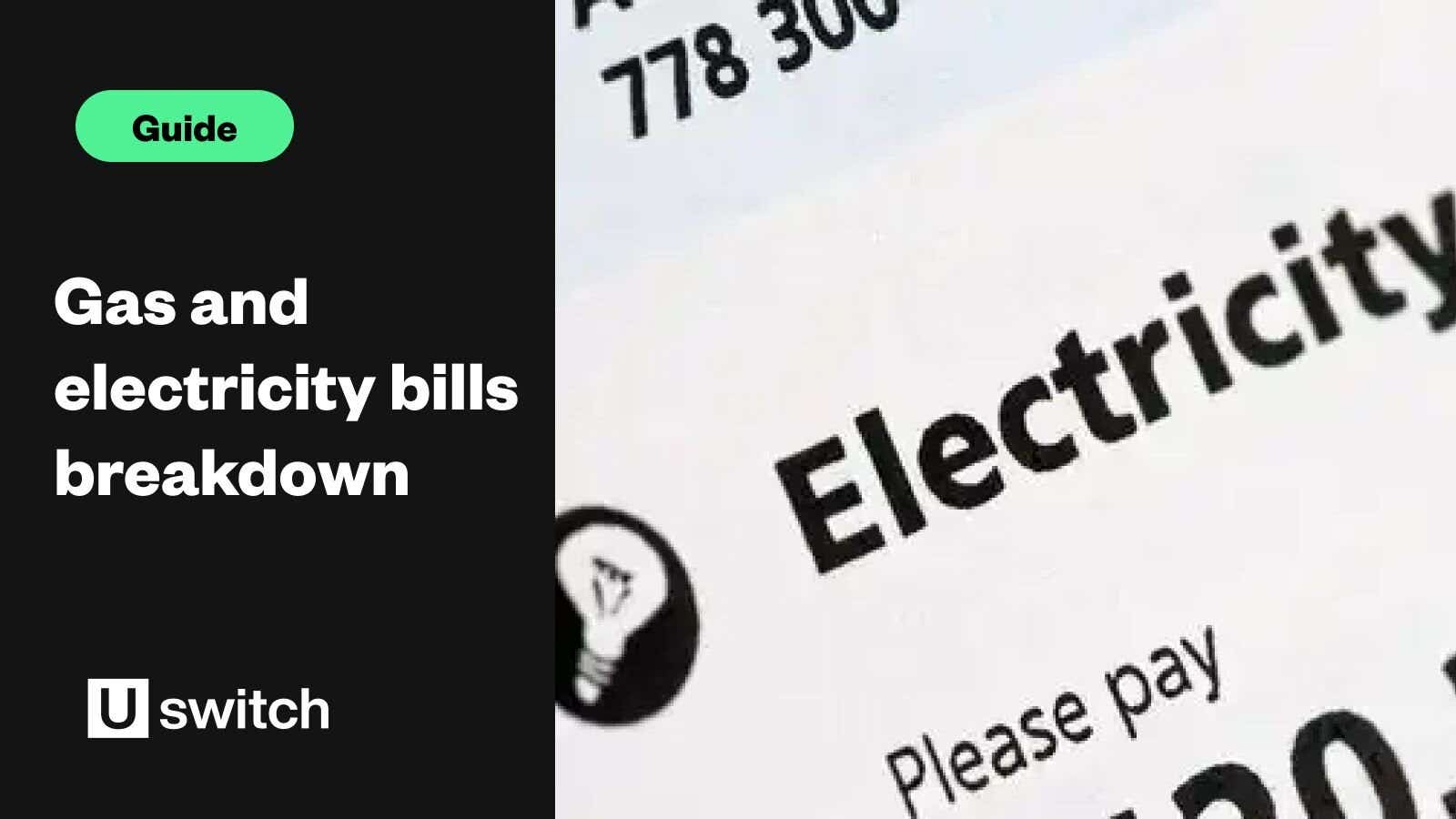What is a utility bill?
A utility bill is the bill you receive for using a basic household service such as gas, electricity or water. Bills are sent through the post or by email several times a year – typically monthly or quarterly in the case of energy bills, or every six months in the case of water bills.
Common utility bill examples
Utility bills cover your home or household’s basic needs. They include:
- Energy – namely gas and/or electricity from the likes of Octopus, British Gas, E.ON Next, ScottishPower, EDF Energy, OVO Energy or another supplier
- Water – including sewage in most cases. Your water supplier depends on where you live, and includes the likes of Northumbrian Water, Welsh Water or Wessex Water
- Phone – whether home or mobile from the likes of BT, Virgin Media, O2 or another telecommunications provider
- Broadband – this may be part of your home phone bill but may be a separate charge if you use a different internet provider like Plusnet
- TV licence
Why utility bills matter
Utility bills are important because they let you see exactly what you owe for a particular utility. In the case of gas and electricity bills, the energy market’s volatility since 2022 has made keeping a close eye on your bill even more important as it also allows you to measure your consumption, which may help you identify savings (see our tips on saving money on your energy bills below).
Energy bills also contain useful information like who supplies your home with gas and/or electricity along with the energy account holder’s name, address and account number. You’ll need this information should you ever need to contact your energy supplier.
Utility bills – including your energy bill – can also be useful when proving your identity and where you live, for example when applying for a bank account.
What's the breakdown of an average utility bill?
The bill provides a summary of the charges your account has accrued since the last bill was sent along with any payments (in the form of credit) you may have made. For most people who pay by Direct Debit, you will receive a monthly bill where the charges and credit are balanced out to show whether your account is currently in credit or debit. Find out more with our guides on how to read your energy bill.
When examining your charges for the past bill, you may be wondering what makes up the cost of your utility. In the case of electricity or gas, it’s made up of several different components:
Wholesale costs
Wholesale costs are the costs that suppliers pay to electricity and gas producers for the energy they supply customers with.
Wholesale costs can go up or down depending on global conflicts and overall demand (i.e. the lower the demand, the lower the price and vice versa). They usually make up about a third of your total bill.
Network costs
Network costs are the costs that suppliers pay network operators to use their pipes and cables to carry gas and electricity around the country. These costs go towards maintaining and upgrading those systems and networks. Note: in the event of a power cut that isn’t your fault, it’s your network operator who is usually responsible for restoring power.
Social and environmental obligation costs
A proportion of your gas and electricity bill may be used to subsidise the government's social and environmental initiatives. Schemes which are subsidised by your gas and electricity bill include:
- Energy Company Obligation (ECO)
- Great British Insulation Scheme (GBIS)
- Warm Home Discount (WHS)
- Feed-in Tariff scheme (FITs)
- Offtaker of Last Resort (OLR).
Other costs include providing help for vulnerable people through schemes like the Priority Services Register.
Operating costs
Operating costs are the costs the energy supplier incurs for the general administration associated with a retail business. These can include running a call centre and other customer service channels, providing meters and sending out bills.
Supplier pre-tax margin
A supplier pre-tax margin is the difference between the payment you make to your supplier and the cost the supplier charges to deliver the energy to you. The pre-tax margin is comprised of some profit and some income that will end up as tax.
VAT
VAT makes up less than 5% of most utility bills.
Other costs
Other costs, such as meter installation and gas storage costs, also comprise small percentages of your utility bill.
How to save money on your utility bill
Are you paying too much for your energy compared to the average gas and electricity bill in the UK? These energy-saving tips will help you bring your energy bills down as well as reduce your carbon footprint. According to the latest smart meter statistics, smart meters have an accuracy rating of 95.5%, meaning you can rely on their readings to make informed decisions.
Heating
The biggest portion of your energy bill is taken up with heating your home and your water. Follow these tips and you could save a fortune on your heating bills:
- Turn your thermostat down by a single degree. This could save you as much as 10% on your energy bills over the space of a year
- Make sure your home is adequately insulated. Loft and cavity wall insulation may require an initial investment, but could easily save you hundreds a year in heating costs
- If you're on a low income, you may be eligible for an energy efficiency grant to make improvements to your home. Find out if you could be eligible and how to apply
- Consider investing in more energy efficient heaters and also look to regularly bleed your radiators
- Investigate the pros and cons of heating individual rooms rather than your whole home
- Try to block any draughts that are coming into your house and make sure you close your curtains to keep the heat in
- Also don’t forget to investigate ways of heating your hot water more efficiently.
In the kitchen
The next largest portion goes towards powering our washing machines, fridges, freezers and cooking appliances. Keep these costs down with these tips:
- Do your washing less frequently. It may sound obvious - but keep the number of loads down by making sure the machine is full every time for maximum efficiency
- Use the economy setting on your washing machine. Many washing powders will now work at temperatures as low as 15-30 degrees, which is enough to effectively wash clothes while also helping your machine run more efficiently
- Dry your clothes outside or on a clothes horse. Tumble dryers use a lot of energy, so if you can dry your clothes for free, that will help keep costs down
- Replace your current fridge and/or freezer with an energy-efficient model. Look out for the energy efficiency stickers on modern appliances. You should also make sure they're kept as full as possible and that the area around them is kept clean so they don't have to work as hard
- Investigate ways of cooking more efficiently with our handy guide.
Computers, gadgets and electronics
Next up is the amount of energy used by consumer electronics such as DVDs, TVs and computers every year. Bring this cost down with the following tips:
- Don't leave electronics on standby. If you're forgetful, invest in a standby saver - it will automatically cut the power to any electronics left on standby
- Don't charge your gadgets unnecessarily. For example, don't leave laptops and mobile phones charging overnight, as this is a big waste of energy
- Don't leave your computer and related devices on when you're not using them. Make sure speakers/monitors/printers are turned off when you've finished with them.
Lighting
Finally, there’s the portion of our bills going towards lighting our homes. The easiest ways to save on your lighting costs are to:
- Buy energy-efficient LED lightbulbs. They last up to 25 times longer than incandescent lightbulbs and each one you swap could save you at least £4 per year
- Turn the lights off behind you when you leave a room and get into the habit of switching the lights off as you move through the house.



